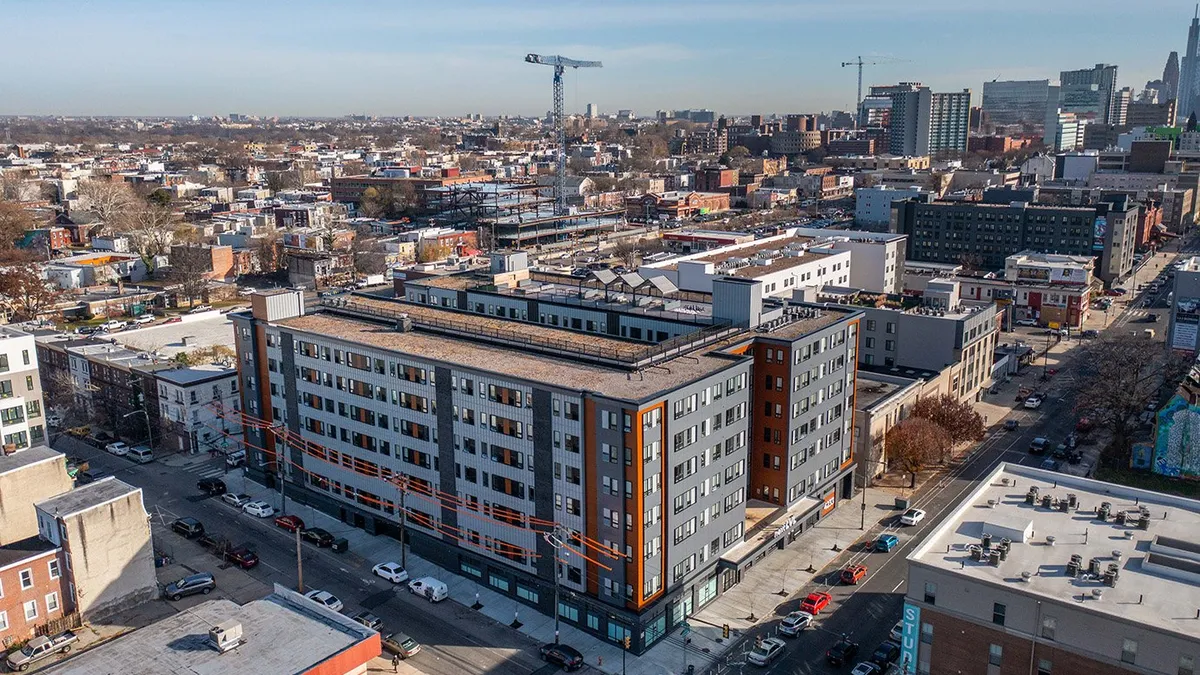Many contractors say mounting financing issues aren’t slowing the pace of new construction in their markets, even as developers convert certain projects to modular to avoid cumbersome banking requirements.
For example, Kelley Barcuch, an Arlington, Texas-based project consultant for Technology Construction Performance, a project management firm, said activity in Texas continues to surge, while Brian Jaubert, a construction superintendent for Gulfstream Plumbing, also based in the Lone Star State, said traditional construction in Texas remains strong.
Elsewhere, Matt Poppoff, president of Poppoff, a Moxee, Washington-based concrete contractor, said his firm’s backlog is larger than ever. On the other side of the country, Marty Copsey, president and COO of MacKenzie Contracting, a Lutherville, Maryland-based general contractor, also said his firm recently posted the largest backlog in company history.

That confidence from contractors has become a norm throughout much of the year, according to Associated Builders and Contractor analysis.
ABC’s Construction Confidence Index reading for sales and staffing levels both moved lower in May, but stayed well above a score of 50, suggesting expectations for continued growth over the next six months. Meanwhile, backlog levels remain unchanged in June from a year ago at 8.9 months, indicating strong levels of projects in the pipeline.
But contractors should still expect continued tightening and tension from small and regional banks. Additionally, lenders are “being more conservative” with individual developers compared to corporate builders, said John Wolfington, principal of Exceler Building Solutions, a Hazelton, Pennsylvania-based construction company.
That’s because pressure on U.S. banks, after the collapse of Silicon Valley Bank and Signature Bank in March, fueled uncertainty in financial markets. That caused concerns for a slowdown in privately financed projects, according to Anirban Basu, ABC chief economist.
For instance, Shopoff Realty Investments paused construction in March on its approximately $550 million Las Vegas Dream Resort due to construction financing concerns.
In the Bay Area in California, several high dollar traditional construction projects have recently been abandoned due to financing issues, said Julie Cantrell, a Boise, Idaho-based consultant who works as an assistant project manager for various federal contractors.
Modular construction ticks up
Those financing issues surrounding traditional construction projects continue to boost interest in modular adoption, said Vaughan Buckley, CEO of Volumetric Building Companies, a Philadelphia-based modular builder.

The permanent modular construction industry topped $12 billion in North America in 2022, accounting for about 6.03% of all new construction starts last year. In 2021, modular construction took up about 5.5% of new construction in North America, as project costs reached just above $10 billion, according to the Modular Building Institute.
“I would absolutely say that interest rate increases and the difficulty of finding construction lending is a tailwind for modular construction,” said Buckley. “In Philadelphia, there are large projects that were otherwise simply not going to be underwritable that were converted to modular and are now going into production.”
Lenders use the same checklists for both traditional construction projects and modular projects, said Buckley. However, modular construction can streamline approvals and entitlement on subsequent projects, speeding up the financing process. Still, the initial modular project usually adds time and complexity as lenders work to understand the nuances, said Buckley.
That rings true especially in the Bay Area, said Buckley.
“We’re seeing [modular projects] take place on the West Coast and around the Bay Area, Oakland specifically, where there are projects that just don’t work [using] traditional construction with the lending environment where it is today,” said Buckley. “Then once they’re converted to modular, they have an opportunity to proceed.”
Still, like other construction projects, rising interest rates could negatively impact modular construction activity as well, said Buckley.
“It increases costs in the market for building when you’re paying more interest,” said Buckley. “So, while we don’t solve the issue, the way that we build helps really mitigate some of those negative impacts and makes projects that otherwise wouldn’t work, work.”






















